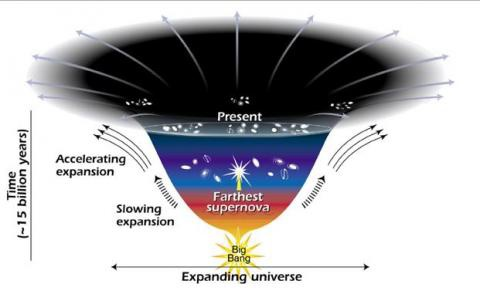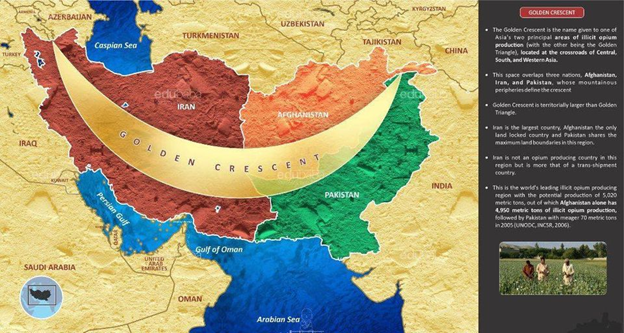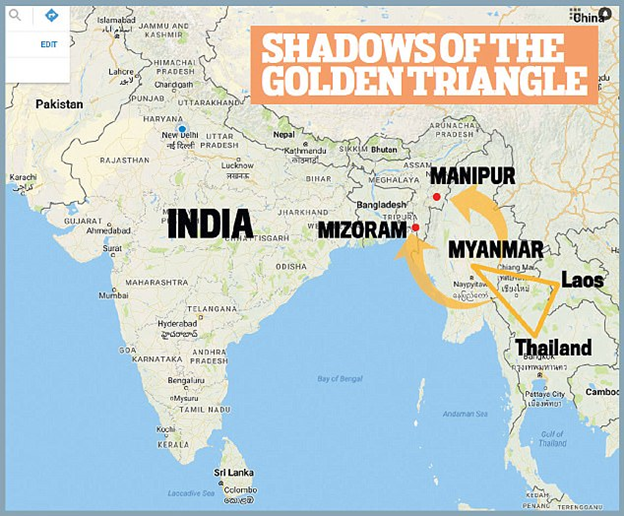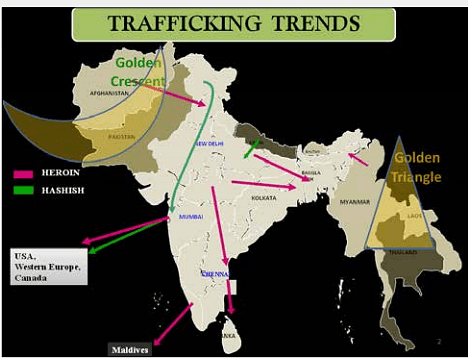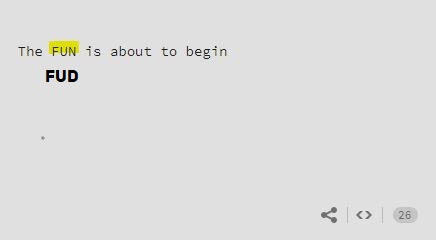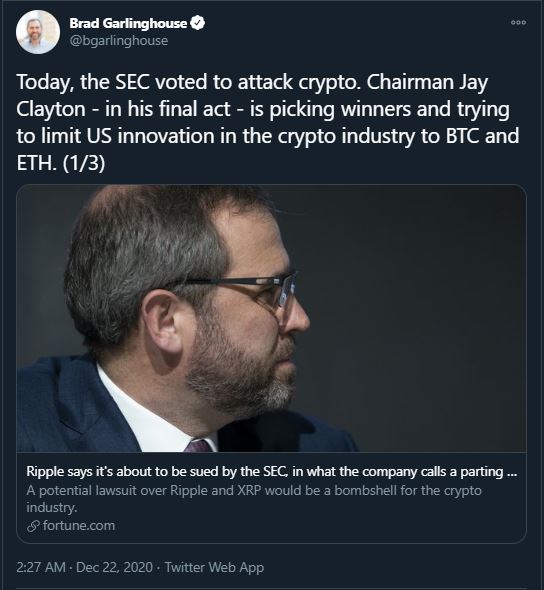You can also check out everything going on by following the hashtag #GlobalScienceshow
Welcome to today's #GlobalScienceShow as part of #FUTURES2020
From now until 6pm GMT we have a new researcher every 20 minutes ready to share their work with you!
What's going on? Check out the schedule below for info on all presenters!
First up at 12.20pm is @JessieW_Palaeo
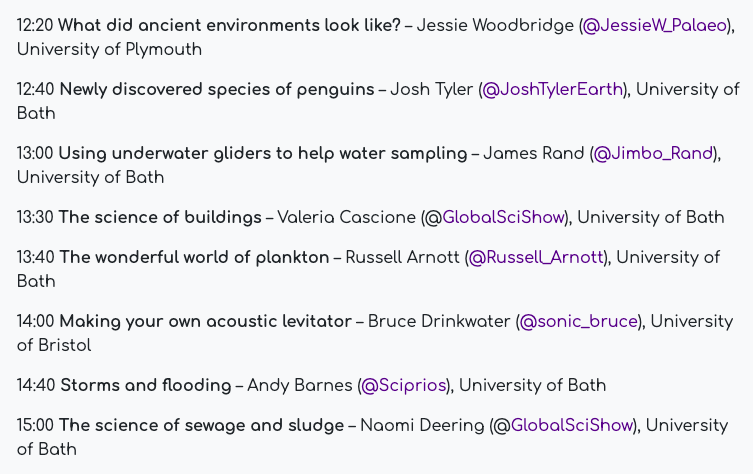
You can also check out everything going on by following the hashtag #GlobalScienceshow
If you know me, then you know I LOVE A QUIZ!!!
#FUTURES2020
https://t.co/jB6sEmP5H3
Hi, my name is Jessie Woodbridge and I'm taking part in the #GlobalScienceShow
— Jessie Woodbridge (@JessieW_Palaeo) November 28, 2020
I'll be discussing #PastEnvironmentalChanges. Follow along with the whole show and check out @JoshTylerEarth who's up next! #FUTURES2020 @GlobalSciShow pic.twitter.com/1PfM7cLQgR
@JessieW_Palaeo #FUTURES2020
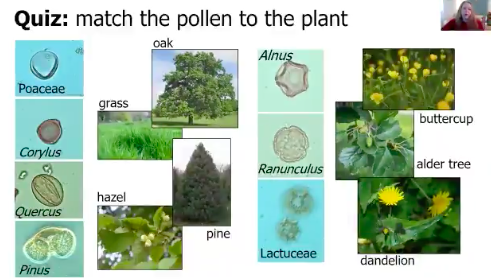
It's so exciting that three new species of Gentoo penguins were recently discovered 🐧🐧🐧
#FUTURES2020
https://t.co/AFOqapN8oS
Hi, my name is Josh Tyler and I'm taking part in the #GlobalScienceShow & #FUTURES2020.
— Josh Tyler (@JoshTylerEarth) November 28, 2020
I'll be tweeting about cryptic species and how we discovered three new species of gentoo penguin\U0001f427. Follow along with the whole show and check out @Jimbo_Rand who is up next. 1/12 pic.twitter.com/4TnkM9dnDB
\U0001f44b we updated @JoshTylerEarth\u2019s voice tweet to include *automatic* captions\u2026 pic.twitter.com/NHSXF4caGQ
— HeadlinerClip Caption (@HeadlinerClip) November 28, 2020
But in reality, these amazing machines could help us monitor bodies of water much more efficiently
https://t.co/5bqkx57HLj
Hello, my name is James Rand and I am taking part in @GlobalSciShow and I will talking about lake science and underwater gliders.
— James Rand (underwater glider developer) (@Jimbo_Rand) November 28, 2020
Ask any questions that you may have and dont forget to check out Valeria Cascione who is on at 1.20pm.#FUTURES2020 #GlobalScienceShow pic.twitter.com/FpKCh0XZcJ
\U0001f44b we updated @Jimbo_Rand\u2019s voice tweet to include *automatic* captions\u2026 pic.twitter.com/44MjpKvW9A
— HeadlinerClip Caption (@HeadlinerClip) November 28, 2020
More from Science
If this is true raises the question of why certain (fringe & unethical) views got access to No.10 while others were ignored... https://t.co/A75HrSEqo4
— Prof. Devi Sridhar (@devisridhar) December 13, 2020
I want to talk about 3 things:
‼️Their fringe views are inhumane, unethical junk science that promotes harm
‼️They complain that they've been marginalized but this is simply untrue
‼️I am sick of people telling me we have to "listen to both sides." There aren't 2 sides here 2/n
These 'dissident' scientists have consistently downplayed COVID-19, urging policymakers not to take aggressive control measures. They claim it is not a serious threat. Gupta even went on TV saying people under 65 shouldn't worry about it!
RECEIPTS
They have consistently argued that policymakers should just let the virus rip, in an attempt to reach herd immunity by natural infection. Kuldorff *continues* to argue for this even now that we have many highly effective, safe vaccines.
Focused Protection: The Middle Ground between Lockdowns and "Let-it-rip". An essay by Jay Bhattacharya (@Stanford), @SunetraGupta (@UniofOxford) and @MartinKulldorff (@Harvard). https://t.co/T8uLxSFwgh
— Martin Kulldorff (@MartinKulldorff) December 11, 2020
We've never controlled a deadly, contagious pandemic before by just letting the virus spread, as this approach kills & disables too many people. In Manaus, Brazil, 66% of the city was infected & an astonishing *1 in 500* people died of COVID-19
1/
I've recently come across a disinformation around evidence relating to school closures and community transmission that's been platformed prominently. This arises from flawed understanding of the data that underlies this evidence, and the methodologies used in these studies. pic.twitter.com/VM7cVKghgj
— Deepti Gurdasani (@dgurdasani1) February 1, 2021
The paper does NOT evaluate the effect of school closures. Instead it conflates all ‘educational settings' into a single category, which includes universities.
2/
The paper primarily evaluates data from March and April 2020. The article is not particularly clear about this limitation, but the information can be found in the hefty supplementary material.
3/

The authors applied four different regression methods (some fancier than others) to the same data. The outcomes of the different regression models are correlated (enough to reach statistical significance), but they vary a lot. (heat map on the right below).
4/
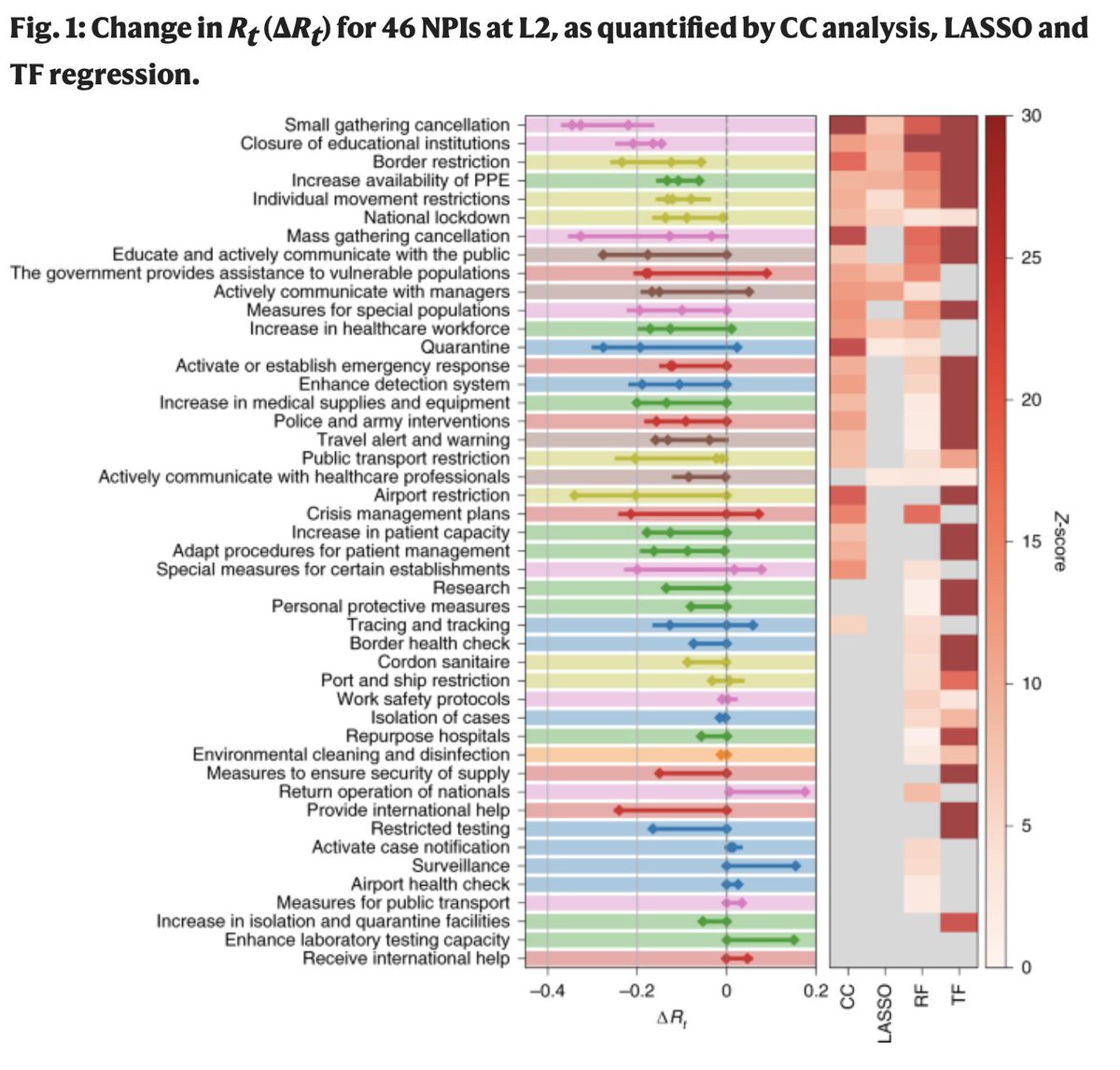
The effect of individual interventions is extremely difficult to disentangle as the authors stress themselves. There is a very large number of interventions considered and the model was run on 49 countries and 26 US States (and not >200 countries).
5/






